The Real World's Most Frightening Buffalonians
by Zachary Burns
No ghosts or ghouls on this list - these are the people you should really fear.

Joseph Christopher
Serial Killer
WHO SHOULD FEAR HIM: black guys
Nobody really knows what sowed the seeds of hatred so deeply and would one day compel him to launch a one-man race war, but one thing was certain: Christopher really hated black people. Not simply your garden variety racist, the .22 Caliber Killer—as he was dubbed by the press—struck fear deep into the heart of Buffalo’s black community. And thanks to a lack of closure on several cases connected to him, his legacy would leave a residual feeling of distrust and neglect, doubly stinging the community he victimized.
It began swiftly in 1980, with the murders of four black males in Buffalo and Niagara Falls in just two days. A few days later, two cab drivers were discovered brutally murdered, their hearts missing from their chests. In the months that followed several more murders and stabbings—Christopher’s new weapon of choice—occurred in New York City—where he would be dubbed the “Midtown Slasher”—and Upstate. Latino males were also now added to Christopher’s hit list. Police were baffled by the crimes until early 1981, when the 25-year-old private at Fort Benning in Georgia was arrested for the attempted murder of a black soldier. Authorities paired evidence at the scene and at his family’s cabin in the Southern Tier with suspiciously coincidental leave dates. Hospitalized following a suicide attempt, Christopher bragged about the killings.
Christopher would eventually claim credit for 13 killings but investigators never charged him with the murders of the two cabbies and a Niagara Falls man, angering many still seeking justice. Christopher was convicted on three counts of murder and sentenced to 60 years to life, dying of a rare form of male breast cancer in 1993.
VERBATIM: ““I was ordered to kill. Who ordered me to kill? Who set up the conspiracy? I don’t know.”

Stefano Magaddino
Mob Boss
WHO SHOULD FEAR HIM: legitimate businessmen, stoolies
The don of the Buffalo Family, one of the longest serving in American history, Magaddino is without a doubt true Mafioso royalty. Born in Sicily, Magaddino cut his teeth with the Castellammarese Family in Brooklyn—long before the hipsters moved in—and headed a respected and feared band of paisans known as the Good Killers. A 1921 New York Times article alleged the hit squad had committed 125 murders. When a 1930 war between rival families broke out, Magaddino left for Buffalo and opportunities untapped. Thanks to Prohibition and Buffalo’s propensity for smuggling and bootlegging, Magaddino’s power grew. Flanked by his Good Killers, Magaddino took over much of the Southern Ontario, Pennsylvania, and Upstate New York loan-sharking, numbers rackets and labor racketeering operations.
But internal wars between Chicago and New York families escalated in the 1950s. Magaddino lobbied for a 1957 meet in the Upstate New York town of Apalachin to settle their disputes. A disagreement over a payoff to the police led to an unexpected raid on the meeting. After Apalachin, the Mafia could no longer deny their existence to the public. The disaster in Apalachin destroyed Magaddino’s credibility and he soon fell out of favor. An attempt on his life was foiled in 1958 when a grenade tossed into his window failed to detonate. Magaddino would remain head of the Buffalo family until 1968, but in name only.
VERBATIM: “Not even the Holy Ghost could come into my territory without my authorization.”
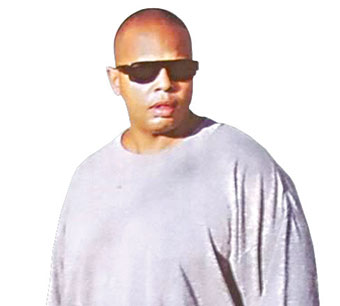
Donald "Sly" Green
Original Gangster
WHO SHOULD FEAR HIM: rivals, drug dealers, snitches
Buffalo’s most notorious gang leader and drug kingpin, Green was head of the infamous “LA Boys”—named for their powerful Los Angeles drug connection. With Green at the helm, the LA Boys tore through the East Side on a wave of violence and intimidation during the late 1980s and early 1990s.
While Green was no stranger to violence—having been convicted of murder while a teenager—his real thirst was for power. In 1988, in an attempt to take over a powerful numbers racket, Green murdered Larnell Cottrell. Later the LA Boys would attempt to kill the only witness. Green was convicted for the murder, but was undeterred by his 25-years-to-life sentence, continuing to mastermind the LA Boys via the prison’s telephone system. With the aid of top enforcer Daryl “Reese” Johnson—who is alleged to have killed eight and attempted the murder of 25 others—the LA Boys executed rival street gangs to consolidate their power, propelling Buffalo to a record-high 92 murders in 1992.
Eventually, the FBI caught up with Green. Aided by more than 1,000 recorded telephone conversations, in 1994 Green was convicted under federal Racketeer Influenced and Corrupt Organization (RICO) guidelines. Twenty-six other gang members pled guilty to RICO charges, effectively dismantling the LA Boys for good. In one of the harshest sentences handed down in Western New York federal court, Green was sentenced to four life sentences and an additional 110 years.
VERBATIM: “Nothing is going to stop me from going all the way to the top. I want the whole pie. I want the whole thing.”
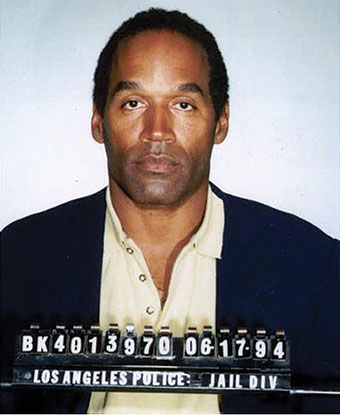
O.J. Simpson
Robber
WHO SHOULD FEAR HIM: sports merchandise dealers, run defenses
The skinny: Before we get started, let’s dispel the myth that “The Juice” is on this list for the brutal 1994 stabbings of his ex-wife Nicole Brown Simpson and her lover Ron Goldman, for which he was acquitted.
Seriously, just because the police came to your house eight times on domestic violence calls that doesn’t make you a murderer. And even though you failed to produce a credible alibi during the brutal slaying of the woman you previously threatened to kill, that doesn’t make you a murderer. And just about anybody could have been wearing the exact same size and style of designer shoes—of which only 299 pairs had been sold in the US, and which you claimed not to own but which you were photographed wearing—that left bloody footprints all over the crime scene. I mean, who in their right mind would believe that a left-handed glove found at the crime scene soaked in a mixture of Simpson’s, his ex-wife’s, and Goldman’s blood, and matching a corresponding right-handed glove found at Simpson’s home, means anything? Analysis of bloody socks found in Simpson’s home that showed DNA characteristics that his ex-wife and only one in 21 billion other people shared is speculative at best. So is DNA evidence of Simpson’s, his ex-wife’s, and Goldman’s blood found in the white Ford Bronco which Simpson and his former Buffalo Bills teammate Al Cowlings used in their dramatic, daytime-televised getaway attempt. And only somebody who was confident in his innocence would pen a book titled If I Did It, a first-person account which postulates how Simpson “would” have committed the murders. I mean, it’s no wonder the guy was acquitted.
That being said, Simpson is serving nine years in a Nevada prison for armed robbery—and that is some scary behavior.
VERBATIM: “I’ve been very clear. I won. I didn’t commit the crime.”
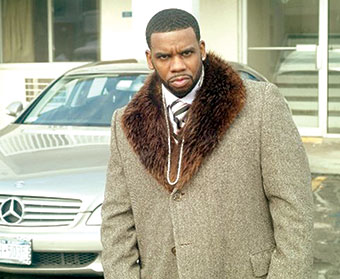
Tobias Boyland
Debt Collector
WHO SHOULD FEAR HIM: credit card abusers, deadbeats
With a nickname like “Bags of Money,” you best believe the man is going to get paid. Boyland, an ex-convict turned illegal debt collector, ran afoul of Attorney General Andrew Cuomo for the aggressive, intimidating, and often “street” tactics used by his numerous agencies. Boyland’s collectors frequently impersonated police and warrant officers during their calls and demanded payment on nonexistent, inflated, or expired debts.
When investigators arrived with a search warrant in 2009, Boyland was found carrying an illegal handgun, and seven more weapons, including an AK-47 assault rifle, were discovered inside his house. Due to a prior conviction for armed robbery in 1993, Boyland was sentenced to 15 years in prison, the maximum allowed.
VERBATIM: “Stay on the grind and when that bitch in you rises up, sit that bitch down.”
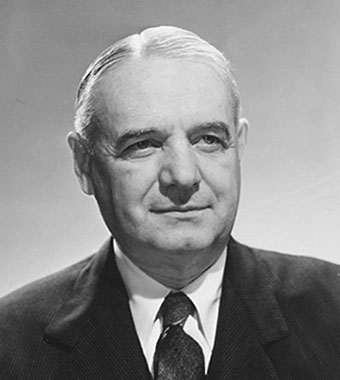
William J. Donovan
Spook
WHO SHOULD FEAR HIM: Nazis, subversives, Third World leaders
A highly decorated soldier who assisted in the prosecution of Nazi war criminals after World War Two, it’s hard to perceive this Buffalo native as frightening. However, anyone referred to as the “Father of Central Intelligence,” responsible for the most powerful, covert, and extrajudicial black ops agency in the world, is worthy of a healthy dose of paranoid fear.
Donovan’s intelligence career began in 1942, when he was charged with forming the Office of Strategic Services. But following the war, President Harry Truman dissolved the agency to counter public fears of an “American Gestapo.” What would rise from those ashes would be the modern day Central Intelligence Agency. The CIA’s transnational regime changes, human rights abuses and drug trafficking are well-documented, but the most powerful—and unsubstantiated—allegations would be made by another OSS veteran and Buffalo native. On his deathbed, Watergate burglar E. Howard Hunt alleged he was part of a CIA conspiracy to assassinate JFK due to his perceived soft stance on communism.
VERBATIM: “We face an enemy who believes one of his chief weapons is that none but he will employ terror. But we will turn terror against him.”
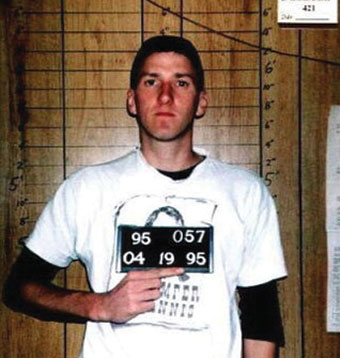
Timothy McVeigh
Domestic Terrorist
WHO SHOULD FEAR HIM: the Feds
The skinny: Way before the Tea Party had a black president to activate their hatred of Big Government, and while Glenn Beck was still just a pudgy, alcoholic radio disc jockey, McVeigh was the culmination of a wave of anti-government sentiment that swept through wingnut America in the early 1990s. An asshole of the highest order, the Pendleton native detonated a truck bomb in front of the Murrah Federal Building in Oklahoma City in 1995, killing 168, including 19 children.
The seeds of McVeigh’s insanity were planted sometime following his Gulf War service and discharge from the US Army in 1991. Frustrated over his inability to forge relationships with women, a delusional and jaded McVeigh left Buffalo in 1992, decrying the town as “too liberal” for his tastes. Like so many other insecure men before him, McVeigh sought comfort in the firearms and fringe subcultures.
Quitting membership in the NRA, which he perceived as too permissive towards gun control, McVeigh took up with the gun show crowd, spending several years on the scene distributing anti-government and white nationalist literature. But it was the federal government’s violent siege of the Branch Davidian cult in Waco and the extremist militia at Ruby Ridge that really set McVeigh off. The anger and paranoia culminated with his fateful rental of the infamous Ryder truck one April morning. Defiant to the death, McVeigh stated upon his execution by lethal injection in federal prison in 2001 that his only regrets were that he hadn’t leveled the building completely.
VERBATIM: “You can’t handle the truth. Because the truth is, I blew up the Murrah building and isn’t it kind of scary that one man could reap this kind of hell?”
blog comments powered by Disqus|
Issue Navigation> Issue Index > v9n42 (Halloween Issue: week of Thursday, October 21) > The Real World's Most Frightening Buffalonians This Week's Issue • Artvoice Daily • Artvoice TV • Events Calendar • Classifieds |









 Current Issue
Current Issue